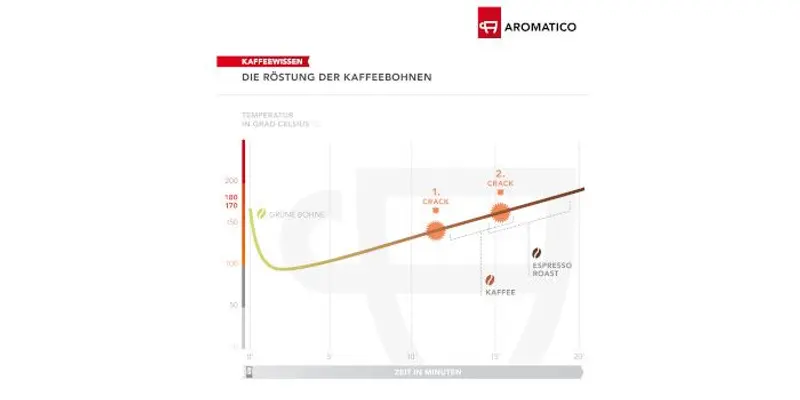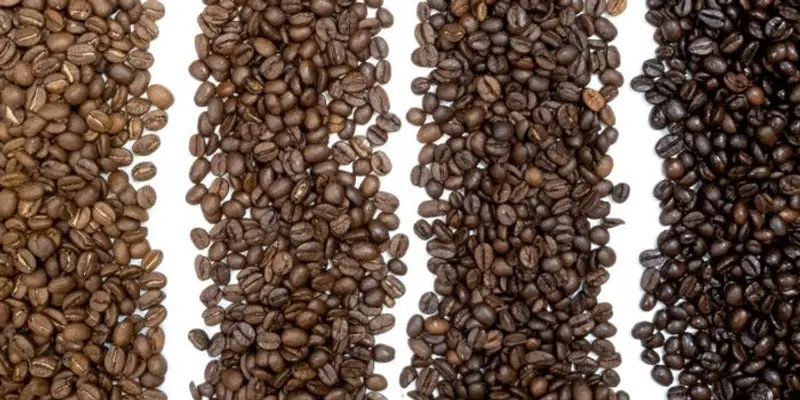Coffee Roasting

Light, medium, or dark roast - Coffee beans differ not only in the type of beans but also in the roast level, which is adjusted to the brewing method and taste. What exactly happens during coffee roasting and how the roast level influences the flavor of the coffee, all of this is explained in our article about coffee roasts.
Coffee Roasting
Roasting is the refinement of coffee beans. Green raw coffee is heated dry in the roastery, which gives it its characteristic color and develops its typical roasted flavors. The interaction of energy input, roasting temperature, and the duration of the roasting process is responsible for the unfolding of taste and aroma. Additionally, each coffee bean has a different composition of coffee constituents due to its provenance, quality, cultivation area, and the processing method of the coffee cherry. The selection and blending of coffee beans have a significant impact on the flavor of the coffee in the cup. Therefore, the experienced roaster develops an optimal roasting process of temperature and time for each coffee blend.

What Happens During the Roasting Process
Raw coffee is placed in a preheated roasting drum for hot air roasting. Initially, the drum temperature drops as the coffee first dries and then absorbs heat. This is followed by the browning phase. Once the core temperature of the bean reaches around 100°C, chemical changes and the formation of aromas occur. For the final roast result, it is important how quickly the temperature rises in the coffee and what the final temperature will be. The roaster controls the roast level by adjusting the energy input to the roasting drum. At the end of the roasting process, the drum reaches a temperature of about 200°C to 220°C, and the coffee itself reaches around 180°C.
During roasting, the coffee bean undergoes numerous physical and chemical changes. Physical changes are easy to observe: the coffee beans change color, volume, shape, and weight. Chemical changes can be tasted and smelled.

The "First Crack" and "Second Crack"
Coffee beans are made up of one-eighth water, which evaporates during the different roasting stages. Additionally, roasting gases are developed. Initially, due to the hard cell walls, steam and gases cannot escape, accumulate, and thus initially double the volume of the bean. This leads to the "First Crack." The bean bursts open with an audible crack. Lighter roasts have reached their endpoint. The "Second Crack" marks the point at which additional steam and gases (such as carbon dioxide) escape. After the roasting time has passed, a dark, typically Italian roast is produced.
Taste Differences
Characteristic of light roasts is a pronounced acidity profile and many fruity notes in the cup. Dark coffee roasts have a full body, more bitterness, and chocolaty flavors.
Conclusion
Coffee roasting ensures that the coffee beans acquire the characteristic qualities we associate with coffee beans – a dark brown, rich color and their roasted smell. Roasting, along with the selection of raw coffee, is the most important factor in the taste of coffee. During roasting, the temperature and time are perfectly matched with the choice of raw coffee to create a perfect coffee flavor. There is a fundamental distinction between light, medium, and dark roasts.